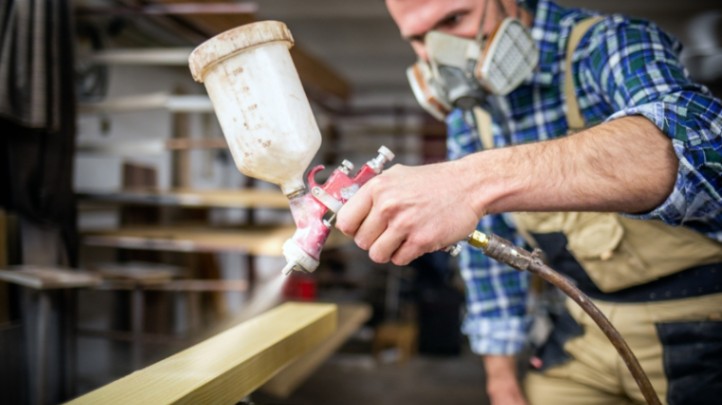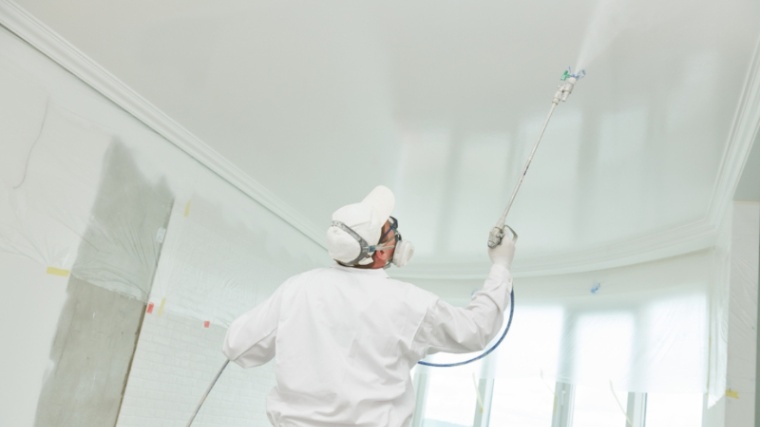Choosing a suitable paint sprayer is crucial for achieving professional-looking results and saving time on your projects. With numerous types of paint sprayers available on the market, it can be overwhelming to make the right choice. This article will guide you on how to choose a paint sprayer by discussing the different types of sprayers, essential features to consider, tips for selection, comparisons of paint sprayer brands, and recommendations for various project types.

1. Importance of Choosing the Right Paint Sprayer
Selecting the appropriate paint sprayer is essential because it directly impacts the quality and efficiency of your painting endeavors. A high-quality sprayer will provide smooth, even coverage and help you complete projects faster. On the other hand, using the wrong sprayer can lead to uneven application, wasted paint, and a frustrating experience overall. Investing time in understanding the available options and evaluating your specific requirements, you can choose a paint sprayer that best suits your needs.
2. Types of Paint Sprayers
There are three primary types of paint sprayers: airless paint sprayers, HVLP paint sprayers, and compressed air paint sprayers. Each type has advantages and disadvantages, which we’ll explore in more detail.

I. Airless Paint Sprayers
Airless paint sprayers are potent machines that utilize high pressure to atomize the paint. They are known for their efficiency and ability to handle large-scale projects quickly. Airless sprayers are suitable for both interior and exterior painting tasks. They can take a variety of paint types, including latex and oil-based paints.
a. Pros:
- The fast and efficient painting process
- Suitable for large-scale projects
- Versatile and compatible with various paint types
b. Cons:
- Overspray may occur if not handled properly.
- Requires more skill to achieve even coverage
- It can be noisy and produce more waste.

II. HVLP Paint Sprayers
HVLP stands for High-Volume Low-Pressure, which describes the operating principle of HVLP sprayers. They used a lower pressure to atomize the paint, resulting in a higher transfer efficiency and reduced overspray. HVLP sprayers are ideal for detailed work and smaller projects, such as furniture refinishing or cabinet painting.
c. Pros:
- Reduced overspray and minimal waste
- Precise control for detailed work
- Suitable for smaller projects
d. Cons:
- Slower than airless sprayers for large areas
- It may require more coats for even coverage.
- Not as effective with thicker coatings

III. Compressed Air Paint Sprayers
Compressed air paint sprayers use compressed air to atomize the paint. They are commonly used in automotive painting and other industrial applications. These precise sprayers can handle various paint types, including automotive finishes and lacquers.
e. Pros:
- Precise control and fine finish quality
- Suitable for automotive and industrial applications
- Compatible with different types of coatings
f. Cons:
- Require an air compressor for operation.
- It can be more expensive compared to other types.
- Require more maintenance and cleaning.
3. Features to Consider When Choosing a Paint Sprayer
When selecting a paint sprayer, several key features should be considered to ensure the best match for your needs. Consider the following factors:
I. Project Requirements
Assess the scale and nature of your painting projects. Determine if you’ll paint large surfaces, intricate details, or both. This evaluation will help you choose a sprayer with the appropriate power, control, and paint flow.
II. Power Source
Paint sprayers can be powered by electricity, battery, or compressed air. Electric sprayers are the most common and offer consistent power. Battery-powered sprayers provide mobility, while compressed air sprayers require an air compressor.
III. Pressure and Flow Rate
A paint sprayer’s pressure and flow rate determine its coverage and speed. Consider the required pressure for your projects and ensure the sprayer can deliver a reasonable flow rate to achieve your desired results efficiently.
IV. Nozzle Size
Nozzle size affects the spray pattern and paint flow. Larger nozzle sizes are suitable for broader coverage, while smaller sizes provide finer control for detailed work. Choose a sprayer with interchangeable nozzles for versatility.
V. Portability
Evaluate the portability of the sprayer, especially if you’ll be working on multiple projects or need to reach different areas. Consider the sprayer’s weight, cord length, and maneuverability to ensure ease of use.
VI. Ease of Use
Look for user-friendly features like adjustable settings, ergonomic design, and intuitive controls. A sprayer that is easy to set up, clean, and maintain will enhance your overall painting experience.
VII. Price Range
Determine your budget and find a paint sprayer that offers good value for your investment. Consider the durability, features, and warranty different models provide within your price range.
4. Tips for Selecting the Right Paint Sprayer
To help you make an informed decision when choosing a paint sprayer, consider the following tips:
I. Assess Your Project Needs
Determine the size, complexity, and surface type of your painting projects. This will guide you in selecting a sprayer with the appropriate features and capabilities.
II. Research Different Brands and Models
Explore various paint sprayer brands and models available on the market. Please read product descriptions, customer reviews, and comparisons to understand their performance and reliability.
III. Read Customer Reviews
Customer reviews provide valuable feedback on the pros and cons of different paint sprayers. Consider both positive and negative reviews to make an unbiased assessment.
IV. Consider the Power Source
Evaluate the advantages and limitations of varying power sources based on your requirements. Choose a power source that aligns with the nature of your projects and offers convenience during operation.
V. Test the Sprayer Before Purchase
Whenever possible, try out the paint sprayer before making a final decision. This lets you gauge its performance, handling, and compatibility with your painting style.

5. Best Paint Sprayers for Different Projects
Now, let’s explore the best paint sprayers suited for various types of projects:
I. Interior Walls and Ceilings
Identify the paint sprayer(s) ideal for painting interior walls and ceilings, considering factors such as coverage, ease of use, control, and compatibility with different paints.
II. Furniture and Cabinets
Recommend paint sprayers that excel in refinishing furniture and cabinets, focusing on features like precision, smooth finish, versatility in handling different coatings, and suitability for intricate details.
III. Exterior Surfaces
Highlight paint sprayers that are well-suited for outdoor painting projects, considering power, coverage, durability, and resistance to weather conditions.
6. Frequently Asked Questions
I. What is the best type of paint sprayer for a beginner?
As a beginner, an HVLP paint sprayer is often a good choice. It offers easier control, reduced overspray, and is suitable for smaller projects.
II. Can I use any paint with a paint sprayer?
Most paint sprayers can handle various paint types, including latex, oil-based, and acrylic. However, always check the manufacturer’s guidelines to ensure compatibility.
III. Do I need an air compressor for a compressed air paint sprayer?
Compressed air paint sprayers require an air compressor to provide the necessary air pressure for atomizing the paint.
IV. How often should I clean my paint sprayer?
It is recommended to clean your paint sprayer thoroughly after each use to prevent clogs and ensure optimal performance.
V. Can I rent a paint sprayer instead of buying one?
Yes, many home improvement stores offer paint sprayer rentals.
7. Conclusion
Choosing a suitable paint sprayer is essential to achieve professional-quality results and streamline painting projects. You can make an informed decision by understanding the types of paint sprayers available, considering critical features, and following practical tips for selection. Additionally, comparing paint sprayer brands and exploring the best options for different project types will further assist you in finding the perfect paint sprayer for your needs.